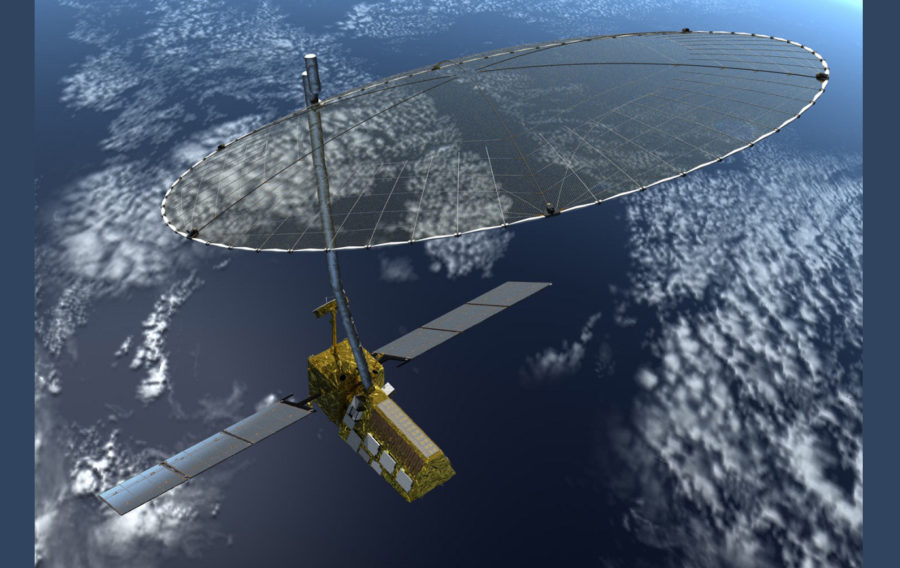
Astro Aerospace, a Northrop Grumman Corporation company, has completed the preliminary design review (PDR) of the AstroMesh® radar antenna reflector for the NASA-ISRO Synthetic Aperture Radar (NISAR) satellite. The antenna reflector, furnished by Astro Aerospace, is part of the NISAR L-band synthetic aperture radar managed by NASA’s Jet Propulsion Laboratory.
Scheduled to launch in 2021, NISAR will be the first radar imaging satellite to use dual L-Band and S-Band frequencies, providing an unprecedented, detailed view of Earth. NISAR is designed to observe some of the planet’s most complex processes, including ecosystem disturbances, ice-sheet dynamics, and natural hazards such as earthquakes, tsunamis, volcanoes and landslides. Data collected from NISAR will reveal information about the evolution and state of Earth’s crust, help scientists better understand our planet’s processes and changing climate, and aid future resource and hazard management. The mission is a partnership between NASA and the Indian Space Research Organization (ISRO).
The NISAR instrument design review represents a major programme milestone. With the preliminary design review successfully completed, the programme will move into detailed design and fabrication.
NISAR follows the successful engineering, deployment and spin up of JPL’s Soil Moisture Active Passive (SMAP) satellite, launched 31st January 2015. Astro supplied the six metre AstroMesh® antenna for SMAP, the largest spinning reflector ever created.
John A. Alvarez, General Manager, Astro Aerospace, said: “We are proud to support JPL and the NISAR program on this important Earth science programme. Thank you to the entire Astro NISAR team who worked tirelessly to ensure a successful PDR.”
If you would like to join our community and read more articles like this then please click here
Astro Aerospace AstroMesh Indian Space Research Organization ISRO Jet Propulsion Laboratory NASA NASA-ISRO Synthetic Aperture Radar satellite NISAR Northrop Grumman PDR Preliminary Design Review Reflector







